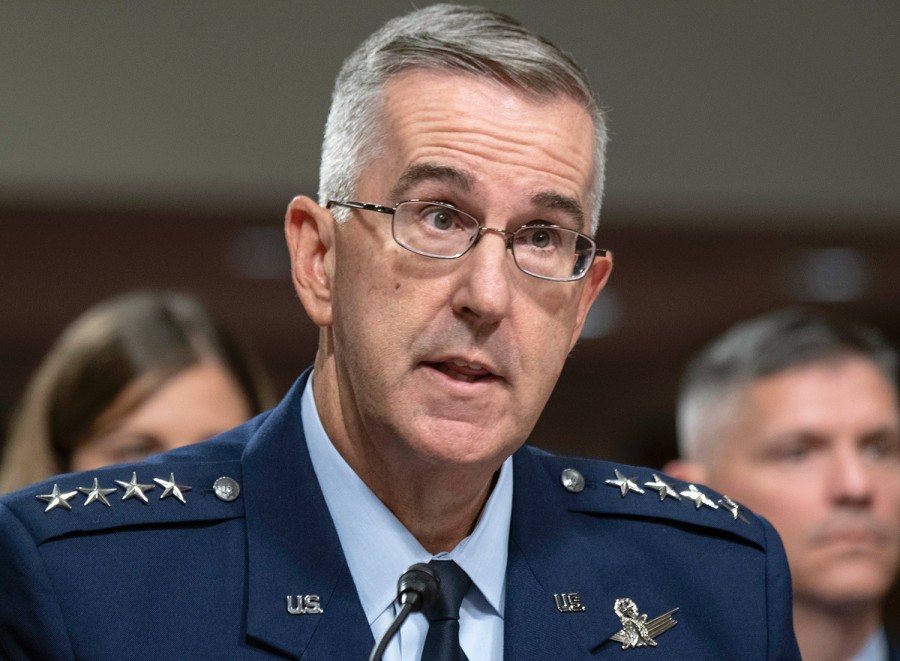
Gen. John Hyten
WASHINGTON: The Joint Requirements Oversight Council (JROC) is struggling to define a key component of the evolving Joint Warfighting Concept: how to maintain “information advantage” over Russia and China on the battlefields of the future, says its chairman, Joint Chiefs of Staff Vice Chair Gen. John Hyten
“We’re actually right now not sure what we’re gonna do with information advantage,” Hyten, who chairs the JROC, told the National Defense University’s WMD Center this morning.
The JROC will be working through the fall to define what capabilities and systems will be needed to underpin the four subcomponents — contested logistics, joint all-domain command and control (JADC2), joint fires, and information advantage — of the evolving new concept for future global, All-Domain Operations, Hyten explained.
As Breaking D readers know, the service chiefs were tasked by Chair Mark Milley and Defense Secretary Mark Esper with crafting a new Joint Warfighting Concept by the end of the year. The work is being led by the Joint Staff’s J-7 directorate responsible for Joint Force Development and the policy staff at the Office of the Secretary of Defense (OSD).
Sydney and I reported in July that Milley had asked the services to volunteer to take the lead on one of the four subcomponents. The Army signed up for contested logistics; the Air Force, JADC2; and the Navy, joint fires. But no service wanted to lead the information advantage effort, Hyten said, so that Sisyphean task has fallen to the Joint Staff with support from each of the services.
Hyten said that everyone involved in the Joint Warfighting Concept development effort “understood conceptually that [information advantage] had to be one of the supporting concepts, because information advantage is going to be the critical piece.”
Indeed, DoD leaders have widely acknowledged that the side that masters the data is the side that wins. Gathering data, collating it, analyzing it and disseminating it incredibly quickly is the key to getting inside an adversary’s OODA Loop and win. Hence, the Pentagon’s heavy emphasis on developing artificial intelligence and machine learning to speed the process of turning data into actionable information.
However, defining what information advantage actually will entail in a high-end conflict, and what is needed to provide it, is not straightforward, Hyten noted. This is because creating information advantage is predicated on managing data, setting data standards, and iterative software development in ways that are new to DoD and the defense industry base.
“So, information advantage is going to be one of the biggest challenges over the next three months as we get to publishing towards the end of the year,” he said. “I have a good idea of what we’re going to do on three supporting concepts, and the JWC as a whole. But as activity right now, I’m not sure exactly how we’re going to document what information advantage really is.”






















